Let’s Talk about China’s Red Envelope Culture

If you ask Chinese kids what they want most during the Spring Festival, all decked out in their Chinese New Year outfits, 99.9% of them will answer, “Give me a big red envelope!” And the remaining 0.01% who don’t ask for red envelopes are just pretending.
Why is there this wonderful tradition of giving red envelopes only during the Chinese New Year? When did this “inherited” red – envelope – giving tradition start? If you’re curious about this question, read on.
Ⅰ. Red Envelopes in the Han and Tang Dynasties Full of Wishes
The term “red envelope” sounds very folksy at first hearing, and in fact, it does originate from a folk story. In the folk legend, there is a monster with black body and white hands called “Sui”. It often goes to other people’s homes on New Year’s Eve to play with young children and make them sick. To drive away “Sui”, people usually wrap eight copper coins (also known as “Eight Immortals coins”. The images of the Eight Immortals (八仙) took shape in the Yuan Dynasty, so this legend may not be too old) in red paper to play a deterrent and suppressing role, and they stay by the bedside to bless the children with safety. Therefore, the custom of “giving lucky money” was formed. In later generations, as recorded in Records of the Festivals in the Capital of the Yan Dynasty (《燕京岁时记》):
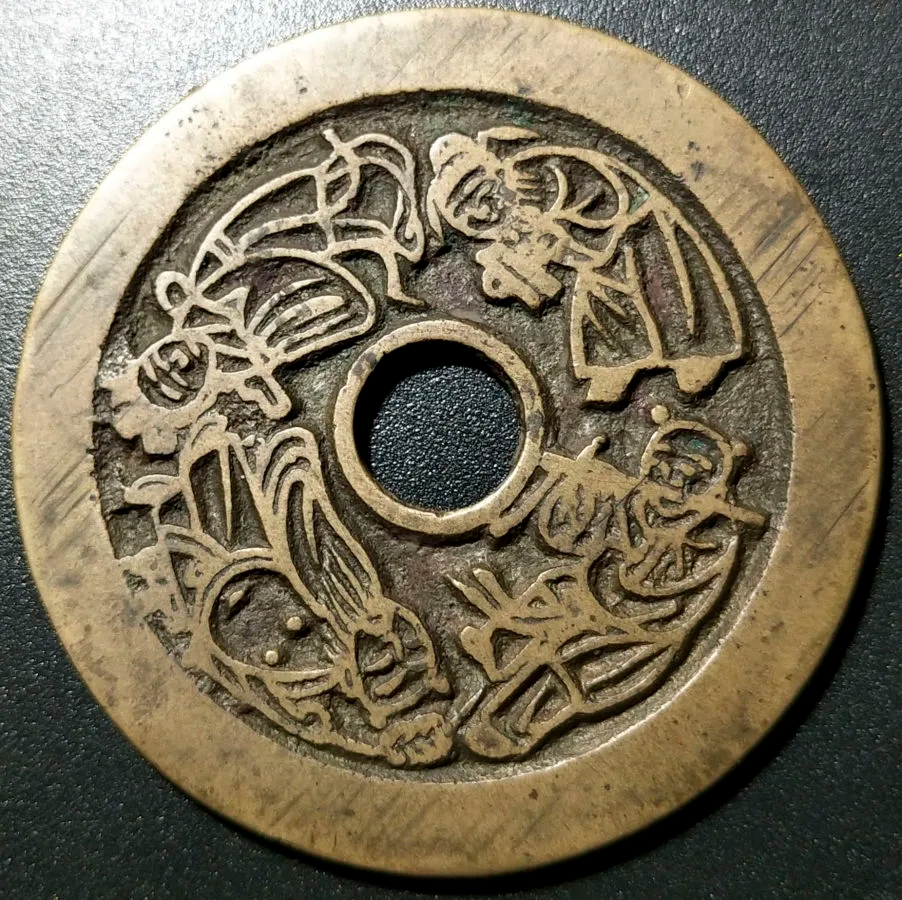
“Thread the coins with colored ropes and braid them into the shape of a dragon, then place them at the foot of the bed. This is called lucky money. When elders give it to children, it is also called lucky money.”
Of course, most of these copper coins are not the coins in circulation in the market, but a kind of yansheng money. “Yansheng (厌胜)” is actually a kind of witchcraft that uses physical totems to pray for one’s wishes. As an ornament for avoiding evil and bringing good luck, yansheng money is often given to others (especially children) to wear. It’s a bit like the game coins we use in arcade game booths. They can’t be exchanged for value in the market.
These coins usually have auspicious inscriptions such as “Peace Under Heaven” and “Long Live for Thousands of Years” on the front, and are decorated with patterns like turtles, snakes, dragons, phoenixes, stars, and constellations on the back. Their shapes are not always round. In the Han Dynasty, there were yansheng coins in various other shapes, such as rectangular ones. As recorded in Wang Fu (王黼)’s Xuanhe Bogutu (《宣和博古图录》) (a catalogue of ancient artifacts in the Xuanhe period): “There are five types of yansheng coins. On one coin, a dragon and horse pattern is shown. The coin is long and square – shaped. It is commonly believed that wearing this can drive away evil spirits and subdue demons.” It probably looks like the picture below.
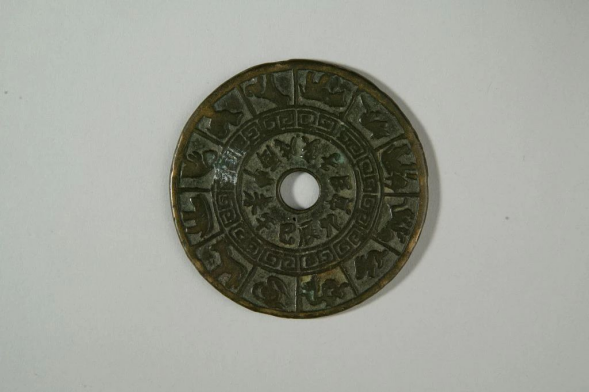
Ⅱ. Red Envelopes in the Song Dynasty for Good Luck
In the Song Dynasty, when the commodity economy was prosperous, red envelopes were mainly for good luck. Therefore, not only was the time of giving red envelopes not limited to festivals and birthdays, but what was inside the red envelopes was no longer yansheng money, let alone skin – care products. It might be paper money, just like today. For example,
In the Song Dynasty, “lishi (利市)” was used as a term for lucky red envelopes and was quite commonly used. In The Three Heroes and Five Gallants, which tells the stories of Bao Zheng and various chivalrous men during the reign of Emperor Renzong of the Northern Song Dynasty, there is a plot: After Bai Yutang (白玉堂) was in a hurry to catch the road and jumped onto a fishing boat, the fisherman rowed the boat to the middle of the river and then said,
“Early in the morning, one should always have a bit of good luck. Moreover, as the saying goes, ‘A boatman doesn’t collect the fare until reaching the other side.’ Sir, if you take out the fare, I can ferry you across.” However, Bai Yutang didn’t have any money with him, so he had to give his clothes as “lishi” for the boatman to pawn for wine. The boatman took the hanfu and said, “If this piece of hanfu is pawned, it can bring more profit than fishing. Sir, don’t be offended. This is the rule of our boatmen.”
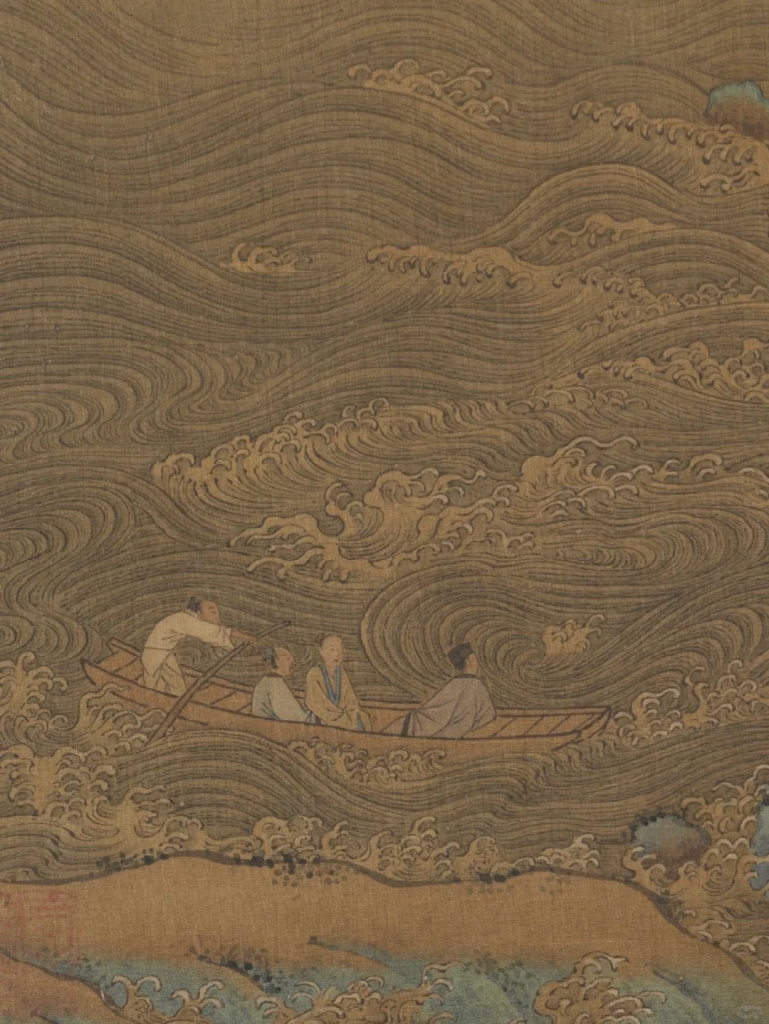
From this, it can be seen that in the Northern Song Dynasty, there was a custom of asking for “lishi” when starting work in the morning. At this time, another fishing boat came and said,
“Great! Early in the morning, there’s good luck. Those who see it should have a share. You must buy some wine to treat me.”
The boatman carrying passengers said, “What great good luck? It’s just a piece of clothing. Look and see, how much money can it be pawned for?”
The other boat owner replied, “Never mind how much it can be pawned for. It’s enough for you and me to drink. Brother, aren’t you eager for a drink?”
Three important pieces of information are reflected here: First, regardless of the amount of money in the lishi, good luck is indeed the top priority. Second, everyone who sees the lishi should have a share to get a bit of the happy atmosphere. Third, the boatman mentioned pawning money, not coins, indicating that the lishi red envelopes in the Song Dynasty might contain not only metal coins but also paper money.
In Zhou Mi’s Old Events in Wulin (《武林旧事》), which records the relevant scenes of the Song people celebrating the Lantern Festival, it also reflects that red envelopes with paper money might have become popular in the Song Dynasty:
Throughout the night, the streets were filled with music. The people in the capital, both men and women, were dressed in beautiful silk clothes, like a sea of clouds. This was the case every night. On the fifth night, the magistrate of the capital would take a small sedan chair, and various dance teams would follow in sequence, stretching for more than ten li. There were beautiful brocades everywhere, and the sound of flutes and drums was resounding. People’s eyes and ears were kept busy. The head of the officials would store paper money in a large bag. Whenever they met small merchants, they would reward them with dozens of coins, which was called “buying the market”. There were even some shrewd people who would put a few slices of pears and lotus roots on a small plate and jump out from the crowded people several times to ask for official money, and this was not prohibited.
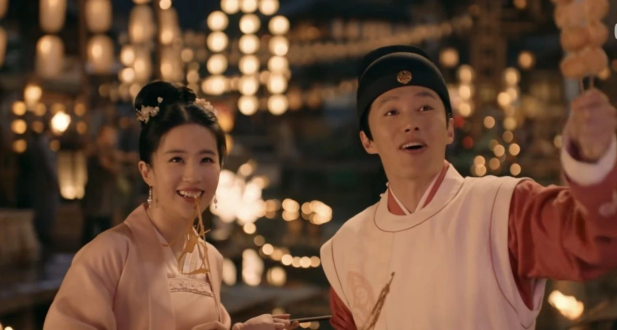
Ⅲ. Red Envelopes in the Qing Dynasty: Extravagant and Generous
In the Qing Dynasty, as members of the royal family donned their elaborate Chinese New Year outfits, simply giving a New Year’s gift red envelope, despite the good sentiment, really didn’t match their dignity. It seemed not grand enough and lacked variety. It seemed not grand enough and lacked variety. So, three, two, one! Here comes the offer! Everyone, take a look at the New Year’s benefits during the Qing Dynasty. Our red envelopes are all – inclusive, and the principle is that everyone who gets a share can enjoy them.
As long as someone with some noble blood relations came to Beijing to pay New Year’s greetings, besides giving them a silver red envelope, for princes at the highest rank, there was also a sheep (a pure natural and green Sunit sheep), a pig (a genuine, fat and plump pig raised in a pen), twenty – five fish (pure wild sturgeon and kaluga sturgeon), and four bottles of imperial wine (good wine with an official label), and two barrels of tea (random varieties). Presumably, the princes of the Qing Dynasty were satisfied with this.
What about those who didn’t reach the rank of prince? County princes also received a pig, twenty fish, three bottles of wine, and a tube of tea. The county princes probably nodded in approval as they received these.
If one didn’t reach the rank of county prince? The beiles also got a pig, ten fish, two bottles of wine, and a tube of tea. No wonder beiles were also respected as nobles.
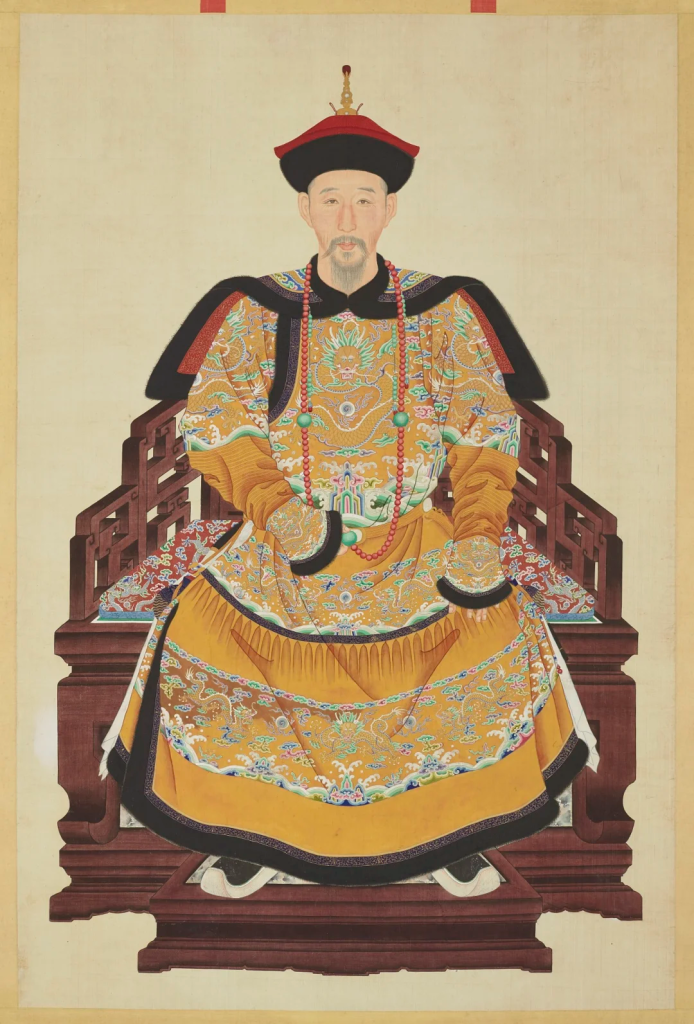
Do you think this is already quite good? When the Mongolian princes and nobles came, they were also given sable – fur collars, which they could take back to make a set of elegant clothes, showing off their grace and luxury.
What about those who weren’t from the royal family? All the ministers also received gift red envelopes prepared by the imperial kitchen. They could take away a robe, a deer, a sheep, mushrooms, lentils, raisins, lotus root starch, and milk cakes.
What if one wasn’t a minister? The nannies, matrons, guards, and servants in the palace all received a wild pheasant (a pure wild pheasant that roamed in the mountains), two fish, and one jin of venison. Presumably, those who worked in the palace were quite satisfied with these welfare benefits.
If you ask me: I’m not Chinese, what should I do? Can I still get my own red envelope when I come to China?
Then I’ll tell you, foreign envoys who came to pay tribute would also be rewarded! In the third year of the Xianfeng reign (1853), the envoys from Siam specially came to pay their respects to the imperial court. The emperor was considerate. Seeing that they were from Southeast Asia and afraid that they might feel the winter was too cold, he immediately gave each of them a set of a fur coat (not leather pants), a cotton – padded jacket, boots, and a hat, making the foreign friends feel warm inside.

Ⅳ. Red Envelopes in the Republic of China Era: Quite Particular
By the time of the Republic of China, although red envelopes were not as extravagant as before, they were still quite particular. They basically followed the Qing Dynasty custom of “stringing a hundred – odd copper coins with long colored threads.” Red envelopes contained a hundred strung – together copper coins, symbolizing “longevity.” Of course, there were also cases of putting one silver dollar in a red envelope, meaning “great profit from a small investment.” Such good wishes and auspicious omens have been passed down to this day. Today, the lucky money in red envelopes is secondary (although very important for children). Red envelopes mainly carry the good intentions of elders.
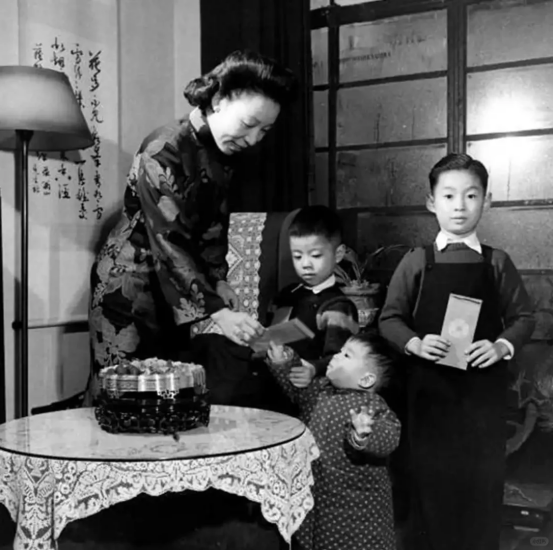
Summary
Amidst the resplendent backdrop of Chinese festivals, where people adorn themselves in elegant Chinese new year outfit, the festival red – envelope culture, which has thrived in China for thousands of years, doesn’t merely contain gold and silver. Instead, it holds deep – seated affection, friendship, blessings, and care. The give – and – take in social etiquette makes the feelings stronger and the blessings deeper. If you have relatives from China, ask them to give you a big red envelope during the New Year. What? You say the Spring Festival has already passed? Then you can ask them to prepare one for 2026. 😎
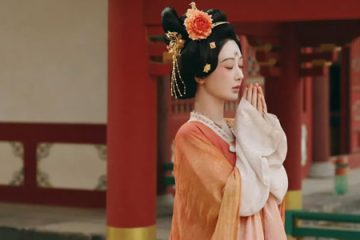
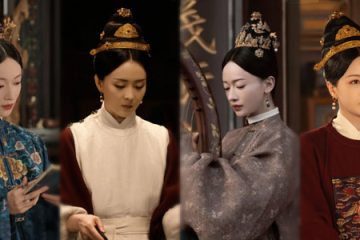

0 Comments